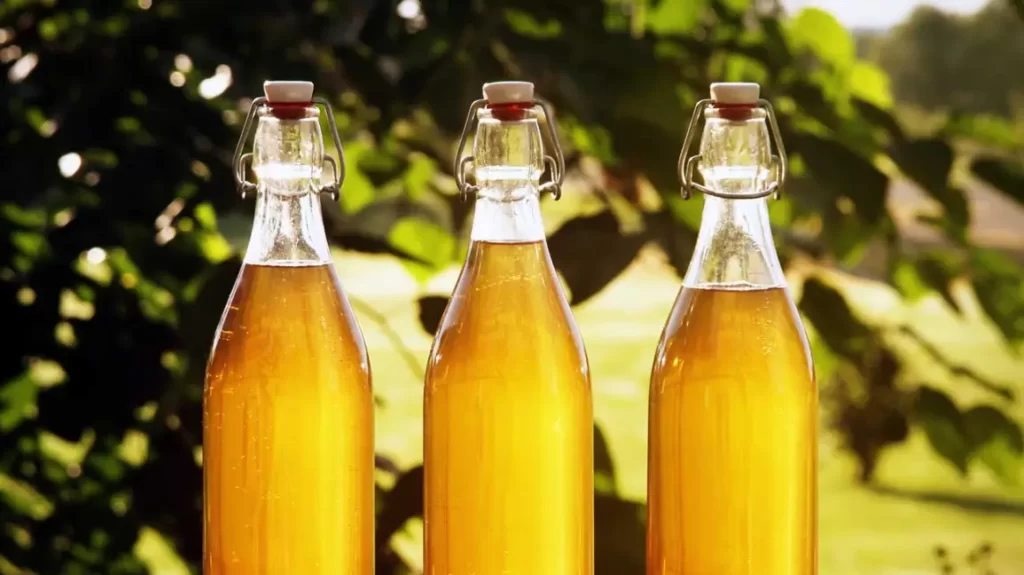What is Mead?
Mead is one of the oldest fermented beverages known to humanity, often referred to as “honey wine.” It is made by fermenting honey with water, and it can also include various fruits, spices, grains, and hops. Mead has a rich history that spans many cultures and centuries, making it a fascinating subject for exploration.
Historical Background
Mead’s origins can be traced back thousands of years, with evidence of its production found in ancient civilizations such as the Egyptians, Greeks, and Romans. It is often associated with mythology and folklore, featuring prominently in various traditions.
- Ancient Civilizations: The earliest records of mead date back to around 7000 BC in China, where honey, rice, and fruit were fermented together. In Europe, mead was consumed by the Celts and Vikings, often during feasts and celebrations.
- Cultural Significance: Mead has been celebrated in literature and mythology. For instance, in Norse mythology, it is said that mead was created from the blood of the wise god Kvasir and was a source of inspiration and wisdom.
Ingredients and Types of Mead
The primary ingredient in mead is honey, which is combined with water and fermented with yeast. Various types of mead can be created by adding different ingredients, leading to a wide range of flavors and styles.
Common Types of Mead
| Type of Mead | Description |
|---|---|
| Traditional Mead | Made with just honey, water, and yeast. |
| Melomel | Mead that includes fruit, such as berries or apples. |
| Metheglin | Spiced mead, often flavored with herbs and spices. |
| Cyser | A blend of mead and apple cider. |
| Pyment | Mead made with grape juice or wine. |
| Braggot | A combination of mead and beer, made with malt and hops. |
The Mead-Making Process
The process of making mead can vary depending on the style, but it generally involves the following steps:
- Preparation: Gather ingredients, including honey, water, and any additional flavorings (fruits, spices, etc.).
- Mixing: Combine honey with water in a fermentation vessel. The ratio of honey to water can affect the sweetness and alcohol content of the final product.
- Fermentation: Add yeast to the mixture and allow it to ferment. This process can take anywhere from a few weeks to several months, depending on the desired flavor profile.
- Racking: Once fermentation is complete, the mead is siphoned off from the sediment into a clean vessel, a process known as racking.
- Aging: Mead is often aged for several months to several years to develop its flavors further.
- Bottling: Once aged, mead is bottled and can be enjoyed immediately or stored for future consumption.
Nutritional Aspects
Mead is often considered a healthful beverage due to its natural ingredients. Honey contains antioxidants, and mead can be lower in calories compared to some other alcoholic beverages. However, the nutritional content can vary based on the ingredients used and the fermentation process.
Mead in Modern Times
In recent years, mead has experienced a resurgence in popularity, with many craft meaderies opening across the globe. This revival has led to innovative flavors and styles, appealing to a new generation of consumers.
- Craft Meadery Boom: The craft beverage movement has embraced mead, with meaderies experimenting with local ingredients and unique flavor combinations.
- Mead Festivals: Events celebrating mead have emerged, allowing enthusiasts to taste various styles and learn about the mead-making process.
Mead and Food Pairing
Mead’s versatility allows it to pair well with a variety of foods. Here are some suggestions for pairing mead with meals:
| Mead Type | Food Pairing |
|---|---|
| Traditional | Grilled meats, roasted vegetables |
| Melomel | Cheese platters, desserts with berries |
| Metheglin | Spicy dishes, Asian cuisine |
| Cyser | Pork dishes, apple desserts |
| Pyment | Charcuterie, rich pasta dishes |
| Braggot | Barbecue, hearty stews |
Frequently Asked Questions (FAQ)
Q1: What is mead made from?
A1: Mead is primarily made from honey, water, and yeast. Various fruits, spices, and grains can also be added to create different styles.
Q2: Is mead alcoholic?
A2: Yes, mead is an alcoholic beverage. The alcohol content can vary depending on the fermentation process and ingredients used.
Q3: How long does it take to make mead?
A3: The fermentation process can take a few weeks to several months, and aging can take additional time, sometimes up to several years.
Q4: What is the difference between mead and honey wine?
A4: Mead is often referred to as honey wine, but it can include various additional ingredients like fruits and spices, whereas honey wine typically refers to a more straightforward honey and water fermentation.
Q5: Can mead be sweet or dry?
A5: Yes, mead can range from sweet to dry based on the honey-to-water ratio and the fermentation process.
Q6: How should mead be served?
A6: Mead can be served chilled, at room temperature, or warmed, depending on the style and personal preference.
Q7: Is mead gluten-free?
A7: Yes, traditional mead made from honey, water, and yeast is gluten-free. However, some flavored meads may contain gluten if grains are used.
Q8: Where can I buy mead?
A8: Mead can be found at specialty liquor stores, craft meaderies, and online retailers that ship alcohol.
Q9: How do I store mead?
A9: Mead should be stored in a cool, dark place, similar to wine. Once opened, it can be refrigerated to maintain its quality.
Q10: Are there any health benefits to drinking mead?
A10: Mead contains antioxidants from honey and may have some health benefits when consumed in moderation. However, it is still an alcoholic beverage and should be enjoyed responsibly.
Conclusion
Mead is a fascinating beverage with a rich history and a diverse range of flavors and styles. Its resurgence in popularity reflects a growing interest in craft beverages and traditional fermentation methods. Whether enjoyed on its own or paired with food, mead offers a unique tasting experience that connects drinkers to ancient traditions.For more detailed information about mead, you can visit the Wikipedia page on mead: Mead – Wikipedia.



